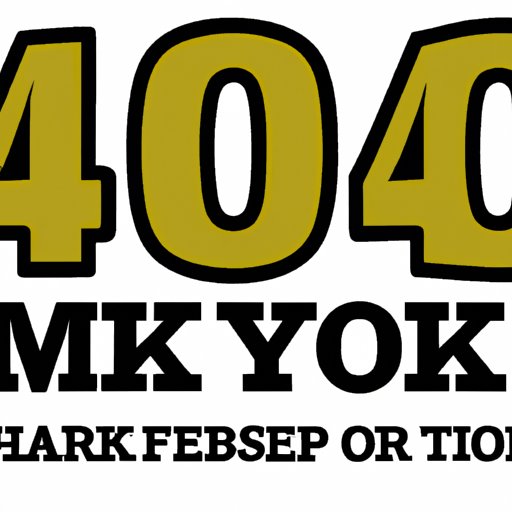Introduction
A 401k plan is a retirement savings account offered by employers to their employees. It allows employees to save pre-tax money for retirement and provides a range of tax benefits for both employers and employees. One of the most popular features of 401k plans is the option for employers to offer a matching contribution.
401k matching is an employer-funded benefit that matches the contributions made by employees up to a certain percentage of their salary. It is a great way for employers to incentivize their employees to save for retirement while also providing tax benefits. In this article, we will explore how does 401k matching work, common questions about 401k matching, and examples of popular 401k matching strategies.
How Does 401k Matching Work?
401k matching is a straightforward process that involves three main steps: employee contribution, employer matching, and vesting schedule. Here is a step-by-step guide on how it works:
1. Employee Contribution
Employees can choose to contribute a portion of their salary to their 401k plan, up to the maximum annual limit set by the IRS. For example, in 2021, the maximum contribution limit for employee 401k contributions is $19,500.
2. Employer Matching
Once an employee has contributed to their 401k plan, their employer can choose to match their contribution up to a certain percentage of their salary. For example, an employer may choose to match 50% of an employee’s contribution, up to a maximum of 3% of the employee’s salary.
3. Vesting Schedule
Once an employer has matched an employee’s contribution, the employer’s contribution is “vested” over time according to a predetermined vesting schedule. This means that the employee will have to wait a certain period of time before they can access the employer’s contribution. The vesting period typically ranges from one to six years, depending on the plan.
4. Tax Implications
Since 401k contributions are made with pre-tax money, employers and employees can benefit from tax savings. According to a study by the Investment Company Institute, the average individual tax savings from 401k contributions was $1,280 in 2019.
Common Questions About 401k Matching
There are a few common questions about 401k matching that employers and employees should be aware of. Here are some of the most frequently asked questions about 401k matching:
A. Eligibility Requirements
In order to be eligible for 401k matching, employees must meet certain criteria set by their employer. These typically include minimum age requirements, length of service, and minimum hours worked per week.
B. Maximum Contribution Limits
The maximum contribution limit for employee 401k contributions is set by the IRS each year. In 2021, the maximum contribution limit for employee 401k contributions is $19,500.
C. Impact of Early Withdrawal
Early withdrawals from a 401k plan may result in penalties, taxes, and other fees. It is important to understand the potential impact of early withdrawal before making any decisions.

Examples of Popular 401k Matching Strategies
There are several different types of 401k matching strategies that employers can use. Here are some of the most popular strategies:
A. Traditional Matching
Traditional matching is the most common type of 401k matching strategy. It involves employers matching a certain percentage of an employee’s contribution, up to a maximum of 3% of the employee’s salary. For example, an employer may choose to match 50% of an employee’s contribution, up to a maximum of 3% of the employee’s salary.
B. Safe Harbor Matching
Safe harbor matching is similar to traditional matching, but it requires employers to make a larger matching contribution. Under this strategy, employers are required to match 100% of an employee’s contribution up to a maximum of 4% of the employee’s salary.
C. Profit Sharing Matching
Profit sharing matching is a more flexible option that allows employers to match employee contributions based on company profits. Under this strategy, employers can choose to match a certain percentage of an employee’s contribution, up to a maximum of 10% of the employee’s salary.
Conclusion
401k matching is a great way for employers to incentivize their employees to save for retirement while also providing tax benefits. It is a straightforward process that involves three main steps: employee contribution, employer matching, and vesting schedule. There are several different types of 401k matching strategies that employers can use, such as traditional, safe harbor, and profit sharing matching.
By offering a 401k matching program, employers can help their employees save for retirement while also taking advantage of tax benefits. It is important to understand the rules and regulations surrounding 401k matching before implementing a plan.
Summary of Benefits
401k matching is a great way for employers to incentivize their employees to save for retirement while also providing tax benefits. It is a straightforward process that involves three main steps: employee contribution, employer matching, and vesting schedule. There are several different types of 401k matching strategies that employers can use, such as traditional, safe harbor, and profit sharing matching.
Final Thoughts
By offering a 401k matching program, employers can help their employees save for retirement while also taking advantage of tax benefits. It is important to understand the rules and regulations surrounding 401k matching before implementing a plan.
(Note: Is this article not meeting your expectations? Do you have knowledge or insights to share? Unlock new opportunities and expand your reach by joining our authors team. Click Registration to join us and share your expertise with our readers.)
